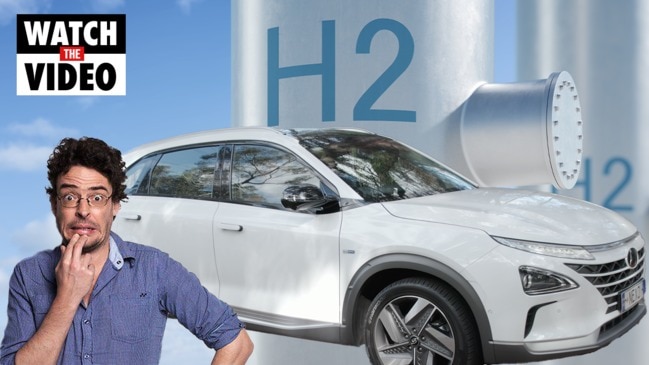Ernst & Young report finds Australia needs a clean energy policy to keep up with China, UAE
A new study has revealed six key clean energy export opportunities for Australia to ensure we don’t lose our edge to rivals like China, the UAE and Germany.

Australia is on the verge of becoming a clean energy and manufacturing export powerhouse but just needs clear federal government policy settings to get there, a survey of top industry figures has found.
The study by accounting giant Ernst & Young found the nation was “uniquely positioned to capitalise” on the emerging new global economy and just needed more federal policy direction and support.
The survey, commissioned by WWF-Australia, collated responses from 53 clean energy and industry experts spanning private companies, peak bodies, research groups and NGOs across the finance, energy, insurance and legal sectors.
Three-quarters said Australia had the skills and natural resources to become a world-leading renewable exporter and 93 per cent said the country was placed to lead the globe on clean manufacturing exports.
And more than 80 per cent said Australia could fulfil this potential by 2040, a decade ahead of the net zero 2050 target currently being considered by the federal government.
However the same number cited the need for a “strong and credible federal climate policy”
as the key to unlocking Australia’s clean export options.
Respondents also warned that without this Australia could lose its competitive edge in the renewable export market to competitors such as China, Germany, Brazil, Chile and the United Arab Emirates.
The report identified six key export opportunities:
*Renewable hydrogen;
*Direct electricity transfer;
*Renewable powered manufacturing, products and commodities;
*Australian expertise and skillsets;
*Components and recycling; and
*Software and services.
Around half of respondents indicated Australian expertise was the most promising prospect
in the immediate term (2025), while renewable hydrogen and renewable power manufacturing were seen as the strongest export prospects in the medium and longer-terms.
WWF-Australia Energy Transition Manager Nicky Ison said now was the perfect time for Australia to strike.
“We have a critical window to stay ahead as the world moves,” said.
“This report proves there is a huge appetite among Australian organisations to seize the export opportunity within our grasp but, without federal policy direction, we risk being left behind.”
“The energy transition represents trillions of dollars of investments, technologies,
infrastructure, and clean commodities and fuel supplies. With a national plan, the right
ambition and investment, we have a unique opportunity to become a renewable energy
superpower, capturing jobs, industries, exports, and economic investment.
“We stand to gain far more than we lose as global economies transition to clean, renewable energy.”


EY partner Emma Herd, who authored the report, said there was a massive amount of global demand and finance for clean energy and manufacturing commodities.
“This survey finds that Australian industry has the appetite, the resources and the capability
to accelerate the growth of new industries to support the acceleration of new industries,” she said.
“Capital markets and investors are hungry for climate solutions. Accelerating the growth of
clean energy and manufacturing opportunities will set Australia up to unlock investment and growth in new industries.
“Respondents to the survey identified that with the right market, policy and technology
incentivisation settings, Australia is well positioned to be a global leader in clean industry and manufacturing.”
Originally published as Ernst & Young report finds Australia needs a clean energy policy to keep up with China, UAE
Read related topics:Mission Zero





